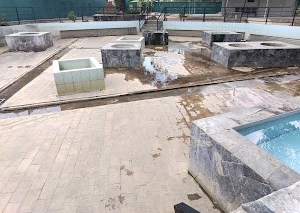Venezuela’s Glaciers Are Gone — A Chilling Climate Wake Up Call
Venezuela Has Likely Lost All Its Glaciers
Yesterday, it was officially announced that Venezuela may have become the first country in recorded history to lose all of its glaciers. The country’s last remaining glacier, known as the Humboldt Glacier (also called La Corona), has now melted to the point where it no longer qualifies as a glacier.
Venezuela, located in South America, once had six glaciers, all situated in the Sierra Nevada de Mérida mountain range, part of the Andes, which rises over 5,000 meters above sea level. By 2011, five of these glaciers had already disappeared, leaving only the Humboldt Glacier on Pico Humboldt, the country’s second-highest mountain.
The International Cryosphere Climate Initiative (ICCI) shared the news on its X account, confirming that the remaining glacier has now shrunk so much that it can no longer be classified as a glacier. It is now referred to as an “ice field,” as it has reduced to just 2 hectares in size.
While there's no globally accepted standard for what qualifies as a glacier, the United States Geological Survey (USGS) suggests that it should cover at least 10 hectares. That means Venezuela's last ice field is only one-fifth of the minimum size recommended to be called a glacier.
Professor Mark Maslin, an earth scientist from City College London, explained that an ice field that’s only the size of two football fields cannot be considered a glacier. A real glacier needs to be much larger and cover a wide area. So, by that definition, Venezuela now has no glaciers left.
Back in December, the Venezuelan government had plans to try and preserve the Humboldt Glacier. One idea was to cover it with a special ice blanket in an attempt to slow down the melting. However, climate scientists raised serious concerns. First, using such materials could have polluted the surrounding sensitive environment. Second, covering the glacier might have made it more vulnerable to heat, speeding up the melting process instead of slowing it down.
The truth is, glaciers aren’t like plants that you can just replant or regrow. Once they start melting and the land beneath is exposed to sunlight, the warming continues, and the ice doesn’t have a chance to recover.
Looking ahead, scientists warn that other countries such as Indonesia, Mexico, and Slovakia may also lose their glaciers soon. Current research predicts that by the year 2100, anywhere between 20% and 80% of the world's glaciers could disappear.




Comments
Post a Comment